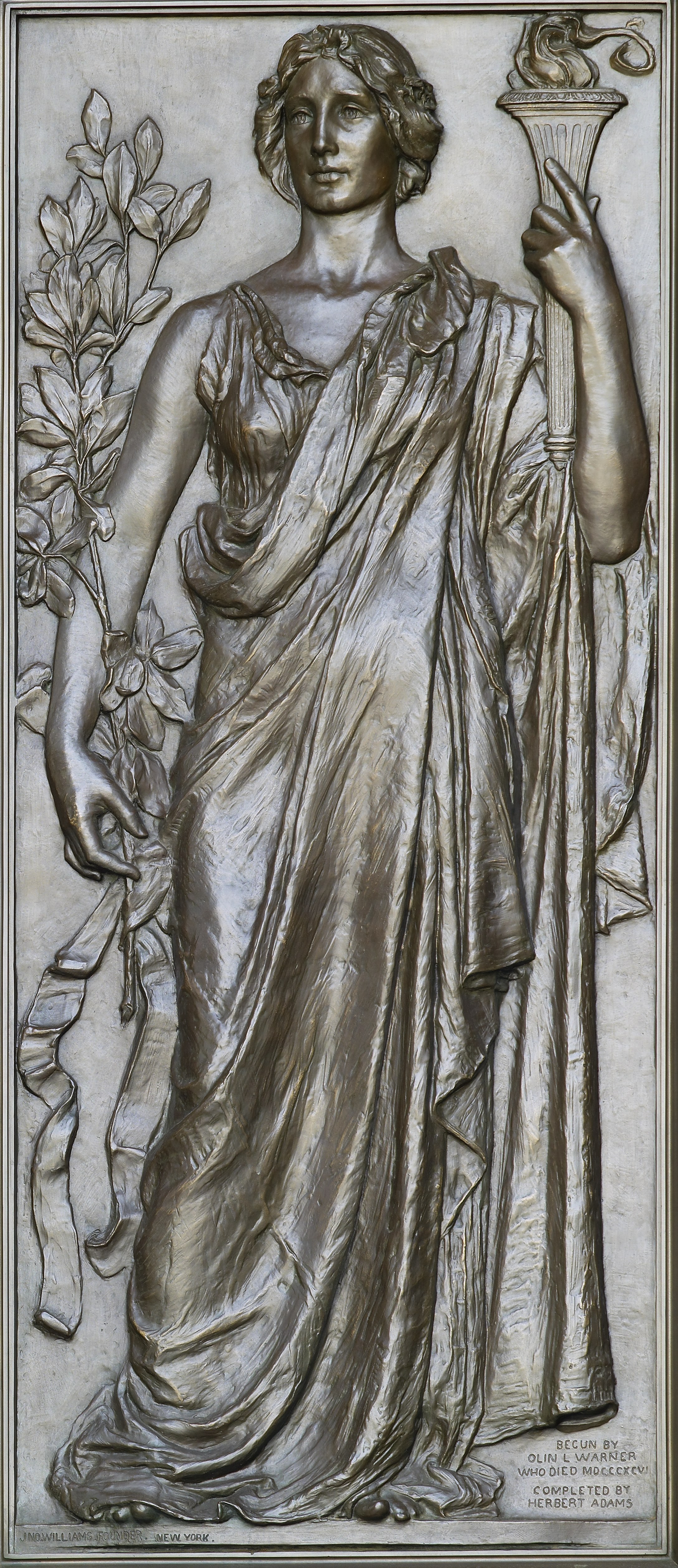|
Primate Research Institute
is a Japanese research center for the study of primates. It was founded in 1967 by primatologists Kinji Imanishi and Junichiro Itani. The institute works toward understanding the biological, behavioral and socioecological aspects of primates, and the origin and evolution of humans. The institute is located in the city of Inuyama, Aichi Prefecture, which is about 150 km east of the main campus of Kyoto University. Through the Division of Biological Sciences of the Graduate School of Science of Kyoto University, the institute offers graduate programs leading to the Master of Science and Doctorate of Science degrees in the field of primatological science. Since 2013, the director of the institute is botanist Hirohisa Hirai (following Tetsuro Matsuzawa's tenure from 2006 to 2012). Facilities The institute has a 5-story main building housing the administration office, the library, and the research departments; a 3-story building for the Center for Human Evolution Modeling Resear ... [...More Info...] [...Related Items...] OR: [Wikipedia] [Google] [Baidu] |
Primates
Primates are a diverse order of mammals. They are divided into the strepsirrhines, which include the lemurs, galagos, and lorisids, and the haplorhines, which include the tarsiers and the simians (monkeys and apes, the latter including humans). Primates arose 85–55 million years ago first from small terrestrial mammals, which adapted to living in the trees of tropical forests: many primate characteristics represent adaptations to life in this challenging environment, including large brains, visual acuity, color vision, a shoulder girdle allowing a large degree of movement in the shoulder joint, and dextrous hands. Primates range in size from Madame Berthe's mouse lemur, which weighs , to the eastern gorilla, weighing over . There are 376–524 species of living primates, depending on which classification is used. New primate species continue to be discovered: over 25 species were described in the 2000s, 36 in the 2010s, and three in the 2020s. Primates hav ... [...More Info...] [...Related Items...] OR: [Wikipedia] [Google] [Baidu] |
Nagoya Railroad
, referred to as , is a private railway company operating around Aichi Prefecture and Gifu Prefecture of Japan. Some of the more famous trains operated by Meitetsu include the '' Panorama Car'' and the '' Panorama Car Super'', both of which offer views through their wide front windows. While the ''Panorama Super'' train is used extensively for the railroad's limited express service, the older and more energy-consuming ''Panorama Car'' train has been retired, the last run being on 27 December 2008. In the Tōkai region around Nagoya, it is a central firm of the Meitetsu Group, which is involved in the transportation industry, the retail trade, the service industry, and the real estate industry, etc. Meiji Mura is the corporate museum of Meitetsu. As of March 31, 2010, Meitetsu operated of track, 275 stations, and 1,090 train cars. Lines Major stations Major stations in Nagoya *NH36 : Meitetsu Nagoya Station *NH34 : Kanayama Station *NH33 : Jingū-mae Statio ... [...More Info...] [...Related Items...] OR: [Wikipedia] [Google] [Baidu] |
Primate Research Centers
Primates are a diverse order of mammals. They are divided into the strepsirrhines, which include the lemurs, galagos, and lorisids, and the haplorhines, which include the tarsiers and the simians (monkeys and apes, the latter including humans). Primates arose 85–55 million years ago first from small terrestrial mammals, which adapted to living in the trees of tropical forests: many primate characteristics represent adaptations to life in this challenging environment, including large brains, visual acuity, color vision, a shoulder girdle allowing a large degree of movement in the shoulder joint, and dextrous hands. Primates range in size from Madame Berthe's mouse lemur, which weighs , to the eastern gorilla, weighing over . There are 376–524 species of living primates, depending on which classification is used. New primate species continue to be discovered: over 25 species were described in the 2000s, 36 in the 2010s, and three in the 2020s. Primates have large b ... [...More Info...] [...Related Items...] OR: [Wikipedia] [Google] [Baidu] |
Research Institutes Established In 1967
Research is "creativity, creative and systematic work undertaken to increase the stock of knowledge". It involves the collection, organization and analysis of evidence to increase understanding of a topic, characterized by a particular attentiveness to controlling sources of bias and error. These activities are characterized by accounting and controlling for biases. A research project may be an expansion on past work in the field. To test the validity of instruments, procedures, or experiments, research may replicate elements of prior projects or the project as a whole. The primary purposes of basic research (as opposed to applied research) are documentation, Discovery (observation), discovery, interpretation (philosophy), interpretation, and the research and development (R&D) of methods and systems for the advancement of human knowledge. Approaches to research depend on epistemology, epistemologies, which vary considerably both within and between humanities and sciences. ... [...More Info...] [...Related Items...] OR: [Wikipedia] [Google] [Baidu] |
National Geographic Channel
National Geographic (formerly National Geographic Channel; abbreviated and trademarked as Nat Geo or Nat Geo TV) is an American pay television network and flagship channel owned by the National Geographic Global Networks unit of Disney General Entertainment Content and National Geographic Partners, a joint venture between The Walt Disney Company (73%) and the National Geographic Society (27%), with the operational management handled by Walt Disney Television. The flagship channel airs non-fiction television programs produced by National Geographic and other production companies. Like History (which was 50% owned by Disney through A&E Networks) and Discovery Channel, the channel features documentaries with factual content involving nature, science, culture, and history, plus some reality and pseudo-scientific entertainment programming. Its primary sister network worldwide, including the United States, is Nat Geo Wild, which focuses on animal-related programming, including ... [...More Info...] [...Related Items...] OR: [Wikipedia] [Google] [Baidu] |
Ayumu (chimpanzee)
Ayumu (born 24 April 2000) is a chimpanzee currently living at the Primate Research Institute of Kyoto University. He is the son of chimpanzee Ai, and has been a participant since infancy in the Ai Project, an ongoing research effort aimed at understanding chimpanzee cognition. As part of the Ai Project, Ayumu participated in a series of short-term memory tasks, such as to remember the sequential order of numbers displaying on a touch-sensitive computer screen. His performance in the tasks was superior to that of comparably trained university students, leading to a possible conclusion that young chimpanzees have better working memory than adult humans, although this has been disputed. See also * List of individual apes This is a list of non-human apes of encyclopedic interest. It includes individual chimpanzees, gorillas, orangutans, bonobos, and gibbons that are in some way famous or notable. Actors * Bam Bam, an orangutan, played Precious on the soap opera ... External l ... [...More Info...] [...Related Items...] OR: [Wikipedia] [Google] [Baidu] |
Ai (Chimpanzee)
Ai (born in 1976, estimated) is a female western chimpanzee (''Pan troglodytes verus''), currently living at the Primate Research Institute of Kyoto University (acronym KUPRI). She is the first subject of the Ai project, a research program started in 1978 by Kiyoko Murofushi and Tetsuro Matsuzawa which is aimed at understanding chimpanzee cognition through computer interface experiments. Biography Ai was born in 1976 (estimated), in the Guinean Forests of West Africa. Born wild, Ai was soon taken into captivity and sold to KUPRI in 1977 by an animal trader (this type of sale became illegal in 1980 with Japan's ratification of CITES). She was the first subject of KUPRI’s chimpanzee project, which was intended to become Japan’s first ape-language study in the vein of earlier ape-language studies. Ai was joined at KUPRI the following year by two more chimpanzees, Akira and Mari. In 2000, Ai gave birth to a son, Ayumu. Ai Project Matsuzawa has written that the difference ... [...More Info...] [...Related Items...] OR: [Wikipedia] [Google] [Baidu] |
Hayato Ikeda
was a Japanese bureaucrat and later politician who served as Prime Minister of Japan from 1960 to 1964. He is best known for his Income Doubling Plan, which promised to double Japan's GDP in ten years. Ikeda is also known for repairing U.S.-Japan relations and Japanese domestic political rifts after the contentious 1960 Anpo Protests, and for presiding over the 1964 Tokyo Olympics. Early life Ikeda was born on 3 December 1899, in Yoshina, Hiroshima Prefecture (present-day Takehara, Hiroshima), the youngest child of Goichirō Ikeda and his wife Ume. He had six siblings. He attended Kyoto Imperial University and joined the Ministry of Finance following graduation in 1925. While at the Ministry, he served as the head of the local tax offices in Hakodate and Utsunomiya. During his time in the latter role, in 1929, he contracted pemphigus foliaceus and went on sick leave for two years, formally resigning in 1931 once his sick leave had run out. The condition was cured by 1934. He ... [...More Info...] [...Related Items...] OR: [Wikipedia] [Google] [Baidu] |
Nobel Prize
The Nobel Prizes ( ; sv, Nobelpriset ; no, Nobelprisen ) are five separate prizes that, according to Alfred Nobel's will of 1895, are awarded to "those who, during the preceding year, have conferred the greatest benefit to humankind." Alfred Nobel was a Swedish chemist, engineer, and industrialist most famously known for the invention of dynamite. He died in 1896. In his will, he bequeathed all of his "remaining realisable assets" to be used to establish five prizes which became known as "Nobel Prizes." Nobel Prizes were first awarded in 1901. Nobel Prizes are awarded in the fields of Physics, Chemistry, Physiology or Medicine, Literature, and Peace (Nobel characterized the Peace Prize as "to the person who has done the most or best to advance fellowship among nations, the abolition or reduction of standing armies, and the establishment and promotion of peace congresses"). In 1968, Sveriges Riksbank (Sweden's central bank) funded the establishment of the Prize in Econom ... [...More Info...] [...Related Items...] OR: [Wikipedia] [Google] [Baidu] |
MEXT
The , also known as MEXT or Monka-shō, is one of the eleven Ministries of Japan that composes part of the executive branch of the Government of Japan. Its goal is to improve the development of Japan in relation with the international community. The ministry is responsible for funding research under its jurisdiction, some of which includes: children's health in relation to home environment, delta-sigma modulations utilizing graphs, gender equality in sciences, neutrino detection which contributes to the study of supernovas around the world, and other general research for the future. History The Meiji government created the first Ministry of Education in 1871. In January 2001, the former Ministry of Education, Science, Sports and Culture and the former merged to become the present MEXT. Organization The Ministry of Education, Culture, Sports, Science and Technology currently is led by the Minister of Education, Culture, Sports, Science and Technology. Under that position ... [...More Info...] [...Related Items...] OR: [Wikipedia] [Google] [Baidu] |
Inuyama Castle
is a ''yamajiro''-style Japanese castle located in the city of Inuyama, Aichi Prefecture, Japan. The castle overlooks the Kiso River, which serves as the border between Aichi and Gifu Prefectures. The ''tenshu'' of Inuyama Castle, one of only 12 pre-modern ''tenshu'' remaining in existence, is determined to the oldest remaining ''tenshu'', dating from the late 1580s. The castle has been a National Historic Site since 2018. Background Inuyama Castle is located on a hill overlooking the Kiso River in what is now the city of Inuyama. Inuyama Castle is the oldest of 12 castles to have retained its '' Tenshukaku'' intact. This main tower is small but due to its complex form, it shows different silhouettes depend on the angle. Among the 12 remaining main towers, the ''tenshu'' at Inuyama Castle is designated as a National Treasure of Japan, as are Matsumoto Castle, Hikone Castle and Himeji Castle. History According to the Heian period ''Engishiki'' a Shinto shrine, the Haritsuna ... [...More Info...] [...Related Items...] OR: [Wikipedia] [Google] [Baidu] |
.jpg)



